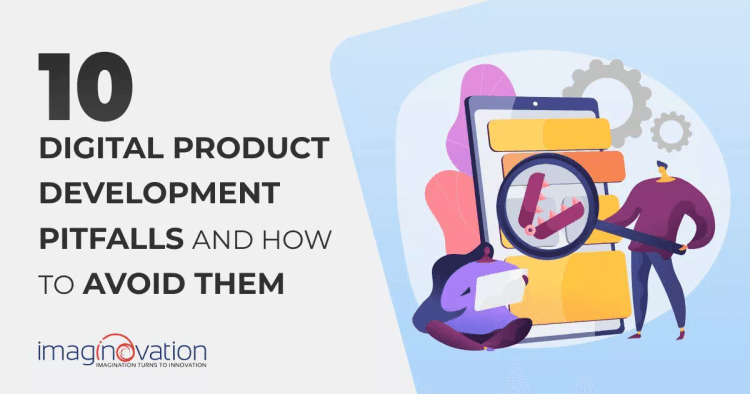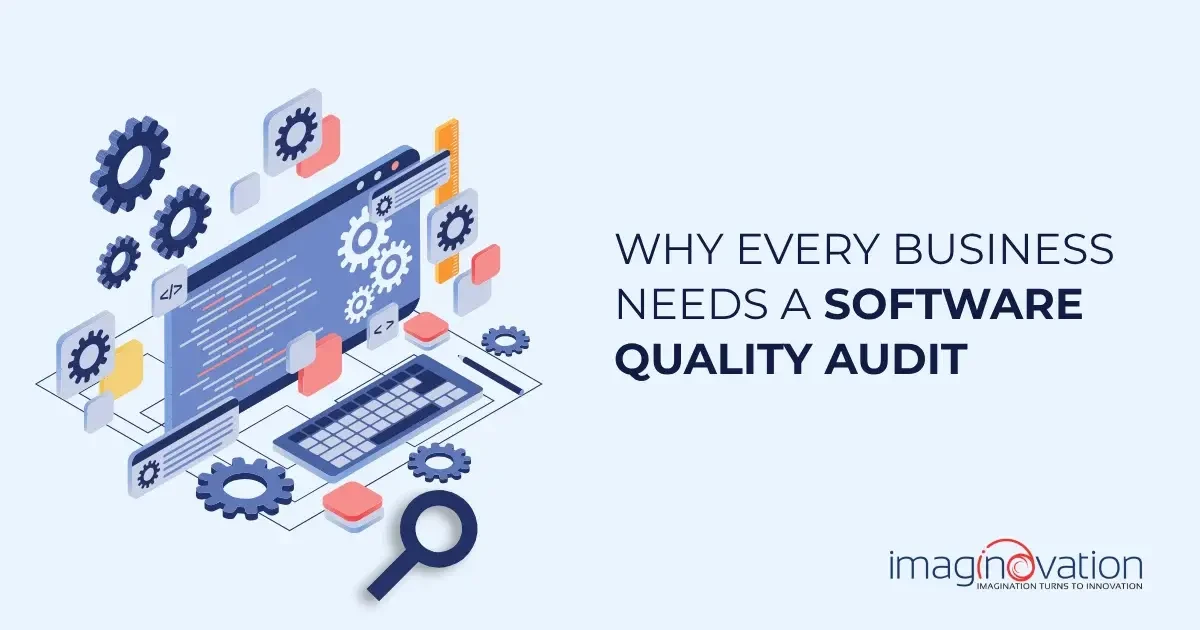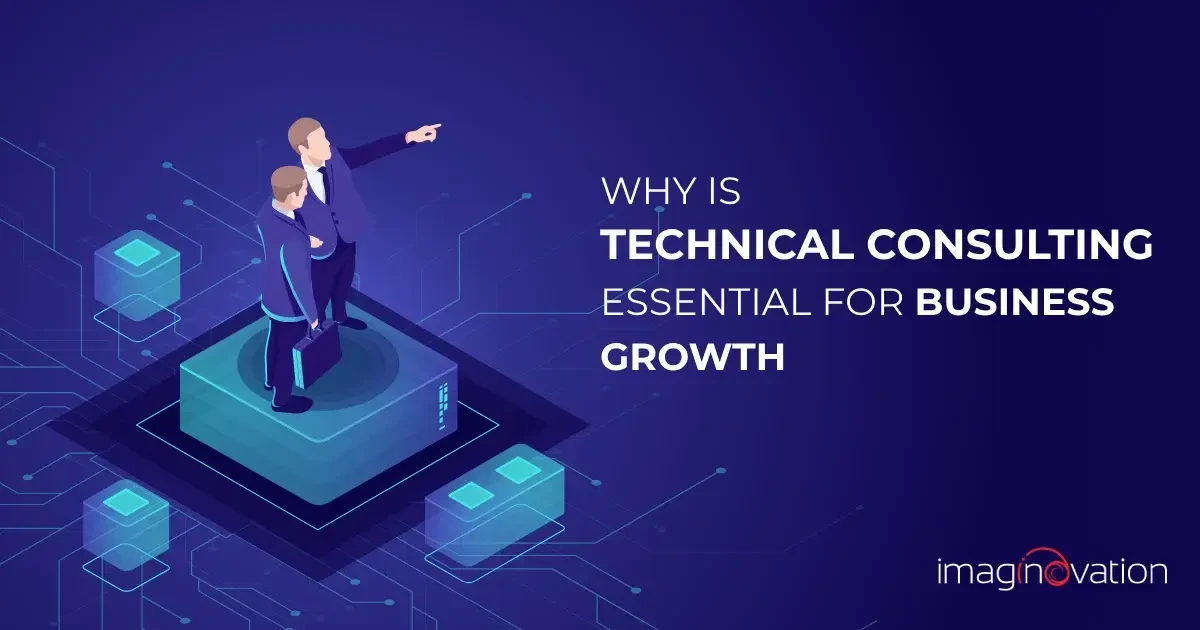Today we are surrounded by a plethora of digital products such as web and mobile applications. We have apps for technically everything. But, there are many excellent product ideas and opportunities out there that are never realized.
The entire process of developing a robust application and bringing it to the market can be riddled with hurdles. You may experience pitfalls while stumbling through the development phase. And eventually, you may end up investing more time and resources than needed if you are caught unawares.
Don’t fret. In this insightful guide, we will discuss some common challenges and pitfalls of digital product development and how to overcome them.
Let’s get started!
Common Pitfalls to Avoid When Developing and Launching A Digital Product
Below are some of the common mistakes you must avoid when creating and launching a software, web or mobile application.
Let’s explore each one of them, learn from them, and ensure that your business does not make the same mistakes.
1. Not Having A Clear Product Development Strategy

A product development strategy can make or break your product. It’s important to have a proper, well-researched and well-defined strategy before you start with development.
Lack of a well- defined strategy is the reason why many organizations fail to deliver valuable products. If your strategy is very high-level or vague, your team will lack a sense of direction – and that’s not something you want for your business. Isn’t it?
An unclear product development strategy that is not in sync with the day-to-day work of dev and function teams often leaves them wondering, “is my work relevant?”
Another problem is, many companies simply put their strategies and plans in a drawer after presenting it to the board. Sometimes they underestimate the importance of careful execution of the strategy during the product-building journey and often realize its value quite late.
Therefore, besides following an aimless roadmap, your team will surely lose track of “the most essential.” Ultimately, in their pursuit to complete too much too soon, they will bleed out the resources (time and money).
This becomes problematic when companies that receive funding decide to invest in features and technologies that do not align well with the efficient development of their product.
SOLUTION
Your product development strategy should communicate where to focus and how to achieve success. It will empower your team to focus on the right things and deliver a great product.
While developing a roadmap or strategy, make sure you include the following:
- Vision: What are your product goals, mention both long-term and short-term goals.
- Challenge: The reason for building this product and what problem you’re trying to solve.
- Outcome: Mention what are you trying to achieve by addressing those issues.
- Actions: These are the critical steps to take as you move towards finding the solution.
- Measure: Mention what will be the KPIs to track for monitoring and assessing the progress.
You see, a clear strategic plan will help you make better decisions and keep an eye on the goals without losing focus.
Make sure this plan is communicated throughout the company and is accessible to all.
And most importantly, be realistic! It is natural to want your product to have lots of features. But does this need stem from creativity, or is it a result of pressure from investors and team members? – That’s important.
Lastly, make sure you focus on directing the resources (time and money) towards high-value activities.
When you have a carefully drafted product development roadmap, all the decisions of purchases, technology changes, and others are based on this plan, and there will be less scope for you to go wrong.
Besides, a detailed strategic plan will ensure that your product gets to market as fast as possible, without wasting resources on unnecessary things.
2. Unclear Product Definition

Continuing with what we discussed above, having a poor product definition is one of the pitfalls that you must avoid at all costs.
Poor product definition is very common in product development. It leads to confusion and chaos in the app development journey.
There are many cases where the dev team doesn’t know what to build while product managers are not clear about the exact product requirements. The research that you did during the strategy and planning phase will come in handy.
SOLUTION
Make sure the product definition answers the following questions:
- Why are we building this?
- How will it work?
- What will it look like?
- How can we know we are successful?
- Who is going to use it?
- When should we launch it?
Identify your customer segments, and if possible, get direct feedback from them. You’ll need to integrate these activities and their result into the dev team work. The idea is to have all team members participate, and not just the marketing team.
The next step would be to transform the feedback into clearly defined requirements.
Review the entire list and have a prioritized list of “must-have” features and requirements stated with your product definition.
3. Project Oversights – Failing to Add Value & Slowing Down Decision-making

Having too many reviews or too few of them is another common mistake when it comes to app development.
With too many reviews, you may end up micromanaging, which may lead to demotivation in the team. The constant meddling will do little good. Besides, when reviews are inappropriately long and too detailed, they do not add much value.
The opposite of this is equally bad. If you monitor the progress on a very high level without regular team interaction, your team will start losing the strategic direction. What if they need your support to sort out a product query? This will ultimately slow down decision-making and can cause expensive delays to your business.
That’s why you need to have a balanced approach and be there.
SOLUTION
Make sure you review your team’s progress, especially when significant investment is involved and your company is due for a major release. But don’t go overboard and try to maintain a balance.
The best way is to build some logically justified checkpoints at the beginning. Define key parameters that the team would be hitting in terms of the product, its features, quality, timeline, and project cost, etc.
If the team members are on target, you should leave them alone and not get into too much reviewing.
But, if the team foresees that they’ll violate any of the checkpoints, they’ll need to escalate the issue and bring it to your notice. The team can propose a solution, and if all agree, the project can proceed.
4. Too Many Stakeholders

A famous saying goes, “too many cooks spoil the broth.” This is literally true when it comes to digital product development. Having too many stakeholders can be one of the biggest obstacles. It can be frustrating for everyone involved.
Often a company appoints somebody to manage a project and give them a budget and a set of objectives. This person will have to present the product to a committee for approval at different stages of development.
The problems start to erupt when the committee overrides the previous decisions, taking the project back to the previous versions. It will lead to further delays as now the committee will need to approve the latest changes.
SOLUTION
Here’s what you should do when there are too many stakeholders involved:
- Create a small team that will work as a single point of contact for product development
- The people in this team will be able to make strategic decisions knowledgeably and quickly
- Others in the organization must respect their decision
- Try to limit the stakeholders in numbers and scope
- Involve the stakeholders early in the process to avoid any issues
- Set clear expectations of the project.
5. Not Researching Your Niche

It’s important to keep the focus on your niche. When you choose a niche for the product, it allows you to focus your efforts on a single area of expertise. It helps you connect with a focused and interested audience.
Creating a niche will also help you connect niche-specific advertisers, sponsors, marketers and influencers. It may also provide you and your organization a clear direction market and sell the product you’re developing.
As a digital product owner, most decisions of yours about the product, it’s pricing, and marketing solely depend on your niche. Try to find the answers to the following questions:
- What does your niche need?
- Is it over-saturated?
- Who are the major players there?
- What are the latest trends?
- What sells?
- What doesn’t?
When you build and launch your product without knowing the answers to these questions, it is like taking a wild guess – with your effort, money, and time.
SOLUTION
There’s a lot you can do.
First, research and monitor your competitors and their social media accounts to get new ideas and see what’s working well in your domain. Determine the audience’s interest, demography, their pain points and what features will make your product stand apart from rest.
Make a thorough assessment of the market you intend to enter and determine the profitability of your niche.
6. Overcomplicating the List of Product Features

Remember, most successful apps are not the ones that have several features. The products that focus on solving key pain-points of the users do great in the market.
Adding more functionalities only increases the expenses and timeline of your project. It also becomes more difficult for users to easily understand and adapt to the app.
SOLUTION
Focus on streamlining and refining your app/product to make it as simple as possible without compromising on the app’s basic functionality.
Your goal should be to deliver a message and solve a problem, not to amaze or astonish your users with extra features. To get clarity, you can jot down all the features that you want to see in the app. Now, create two separate lists – Only Essential Features and Nice-to-Have Features.
This exercise will give you a better picture and clear idea as to which features should you really add in the app and which ones you can skip for now.
Remember, no app is perfect in its first launch. You can always add more features in the app based on your customers’ feedback.
7. Under-Resourced Projects Leading to Functional Bottlenecks

Under-resourcing is considered a primary reason for project failure. The approach to resource a project varies. While some companies base it on the company’s structure, others rely on the client and the type of contract.
Under-resourcing of projects could happen due to a lack of enough qualified resources or lack of planning and scheduling. Whatever may be the reasons, it generally leads to functional bottlenecks.
Both quality and efficiency will fall in an under-resourced project.
SOLUTION
Below are the important steps you can take to avoid these bottlenecks.
- Make sure you have hired an adequately skilled team
- A project owner should not own more than two projects at a time
To avoid a resource shortage, monitor your project resources throughout the project by:
- Tracking the resource availability
- Managing and tracking workload allocation
- Monitoring the project schedules
8. Poorly Defined Roles and Responsibilities

The basic question that every product owner must answer in the development phase is – who does what.
Not many can answer this with conviction. Sometimes, even the teams aren’t clear about who is responsible for which deliverable.
When more than one person assumes that they are responsible for a specific thing, it leads to redundant work and confusion.
At times roles are not communicated to the functional groups.
SOLUTION
Make sure you hire a project manager so he knows all the ins and outs of your project. In addition, you can also:
- Define and document the roles and responsibilities of all at the beginning of the project.
- Divide broader tasks into smaller, bite-sized activities.
- Have one and only one person who is directly responsible for a deliverable.
9. Ignoring Pre-Launch Marketing

When it comes to app marketing, it can be crucial to create a pre-launch buzz.
Have you given enough thought about marketing your app before it is ready for launch? Or, do you have a robust marketing plan in place?
If you’re already in the development phase of the product and you still don’t have a marketing plan, it will create troubles when you launch the product.
It’s a popular misconception that a great product will market itself. Well, it’s not completely true. There’s a fierce competition in the mobile app world, just to grab extra few minutes of attention from the users.
Therefore, to ensure your app gets enough attention, you need a powerful marketing plan that will cover both pre-launch and post-launch initiatives.
SOLUTION
You don’t have to start spending big on advertising before even the product is launched. Start early and create a buzz with the help of social media and email marketing.
You can use your social media network to get the word out. Then gradually build connections with the influencers in your niche to help you spread the word.
10. Focusing on Technology Instead of the Product

Yes, even though the underlying technology will play a crucial role in a product’s success, you don’t have to put too much focus on it as a product owner.
Instead, you need to focus on the end product, whether it is feasible or not and the overall experience it gives to the users. Customer experience is one of the critical KPIs, so make sure your app provides a great customer experience.
SOLUTION
So, how to ensure your product offers an incredible customer experience? The main criteria should be what type of users it points towards, which ones it does not target, what problem this product resolves, and which ones it does not.
Here are the questions that you need to answer:
- Can you use the app without any issues?
- Does it cater to your needs?
- Can you easily find the feature that you’re looking for?
- Does the app provide some value to your life?
- Can you trust it?
- Is it accessible to you?
Do remember, technology is a tool, not an end. The end is the product in the making. The technology that is used is simply a tool to build your product. Although it is essential, focusing on what tool to use and not focusing on what you want to develop will lead to failure.
Partner with Imaginovation for Successful Product Development and Launch
How do you avoid all these challenges and develop a successful digital product?
Begin with a clear strategy and product definition—conduct thorough user and niche. And, most importantly, find a reliable app development company such as Imaginovation that can turn your vision into a successful digital reality. If you need any help with your digital product development, get in touch with us.
Imaginovation is an award-winning web and mobile app development company with vast experience in crafting remarkable digital success stories for diverse companies.
Let’s talk.




